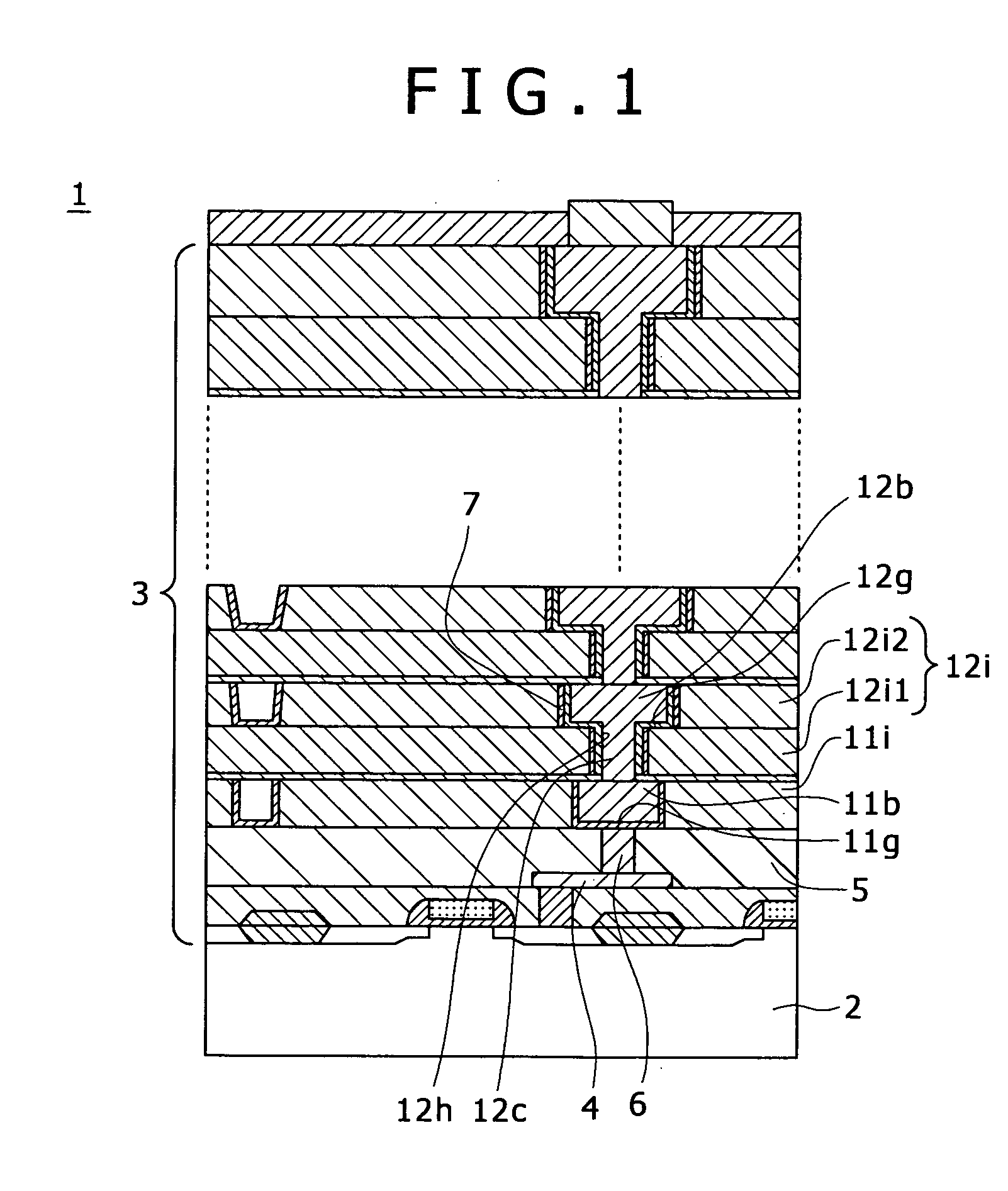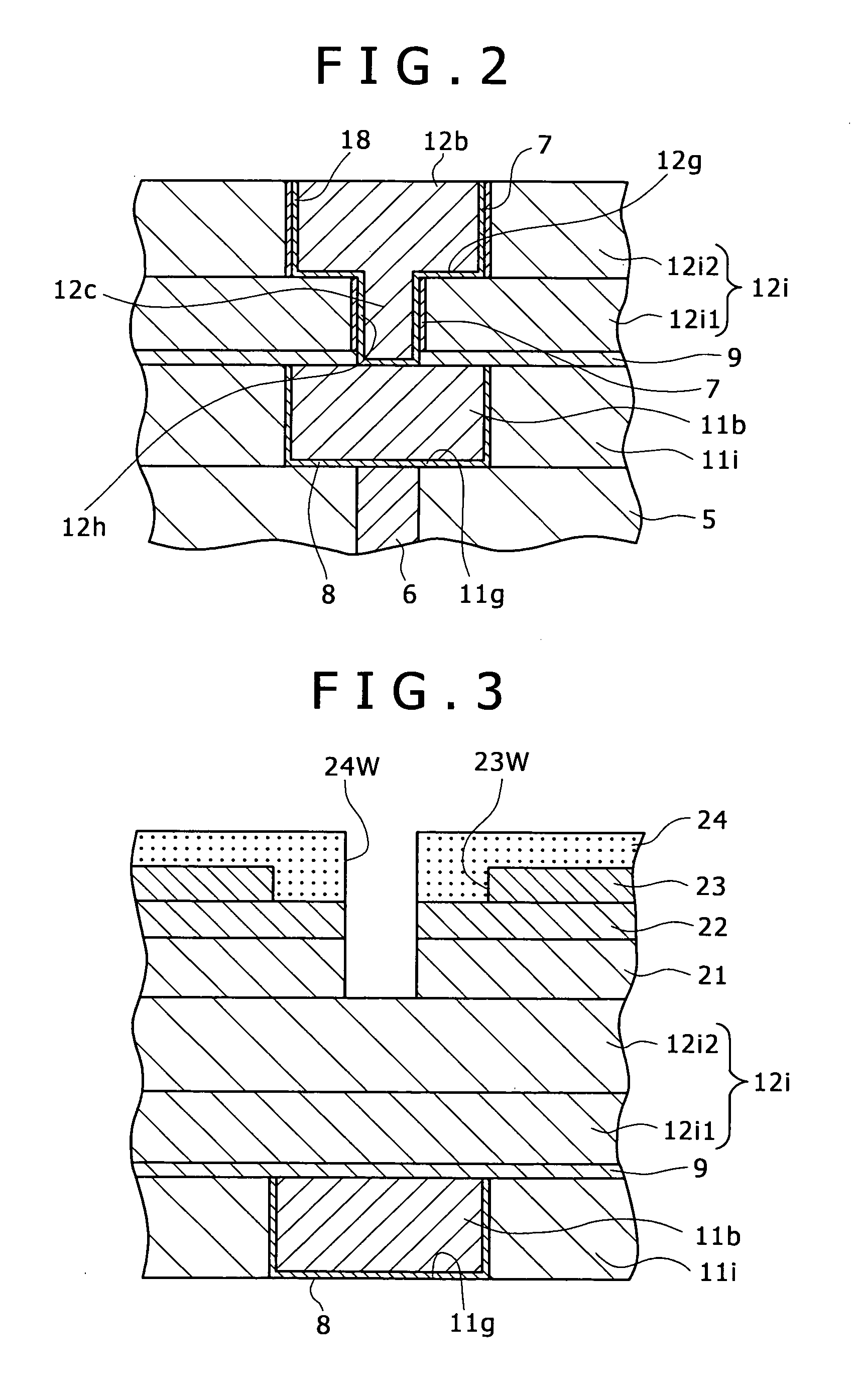Multi-layer wiring structure, semiconductor apparatus having multi-layer wiring structure, and methods of manufacturing them
a multi-layer wiring and semiconductor technology, applied in the direction of semiconductor/solid-state device manufacturing, electric devices, basic electric elements, etc., can solve the problems of poor processability, generation of wiring width variations, and all proposed methods have reliability problems, etc., to achieve high-density buried wiring, low resistance contact can be contrived, and high reliability. , the effect of high-speed operation property
- Summary
- Abstract
- Description
- Claims
- Application Information
AI Technical Summary
Benefits of technology
Problems solved by technology
Method used
Image
Examples
first embodiment
of the Method of Manufacturing the Multi-layer Wiring Structure
[0071] First, as shown in FIG. 3, the first insulation layer 11i of SiOC, for example, is formed on the flattening insulation layer 5 (not shown) on the semiconductor substrate 2 (not shown) by a PE-CVD (Plasma Enhanced-Chemical Vapor Deposition) process. The above-mentioned first wiring grooves 11g are formed in the first insulation layer 11i by RIE (Reactive Ion Etching) or the like.
[0072] The inside surfaces of the first wiring grooves 11g are coated with a barrier metal layer 8 of SiN, SiC or the like by, for example, sputtering, and the first buried wiring 11b composed of a low-resistance metal, for example, Cu, is formed on the inside surfaces, with the barrier metal layer 8 therebetween. The formation of the buried wiring 11b is conducted by a method in which a layer of Cu, for example, is formed in a thickness sufficiently greater than the depth of the wiring grooves 11g by sputtering, plating or the like, and t...
second embodiment
of the Method of Manufacturing the Multi-Layer Wiring Structure
[0099] This embodiment is the case where the protective film 7 is composed of a barrier metal layer 18. In this case, the steps shown in FIGS. 3 to 8 can be performed by adopting the same method as above-described.
[0100] In this case, in place of the formation of the protective film 7 composed of the insulation layer, sputtering of, for example, Ta, TaN, Ti, WN or the like is conducted in a sputtering apparatus for the barrier metal, to form the barrier metal layer 18 as shown in FIG. 12.
[0101] Thereafter, introduction of argon gas and application of a voltage to the substrate 2 in a chamber of the sputtering apparatus are controlled, whereby it is possible to leave the barrier metal layer 18 on the inside surfaces of the second wiring grooves 12g and the wiring connection holes 12h, while enhancing the reverse sputtering for the surfaces intersecting the depth direction thereof so as thereby to remove the barrier meta...
PUM
 Login to View More
Login to View More Abstract
Description
Claims
Application Information
 Login to View More
Login to View More - R&D
- Intellectual Property
- Life Sciences
- Materials
- Tech Scout
- Unparalleled Data Quality
- Higher Quality Content
- 60% Fewer Hallucinations
Browse by: Latest US Patents, China's latest patents, Technical Efficacy Thesaurus, Application Domain, Technology Topic, Popular Technical Reports.
© 2025 PatSnap. All rights reserved.Legal|Privacy policy|Modern Slavery Act Transparency Statement|Sitemap|About US| Contact US: help@patsnap.com



